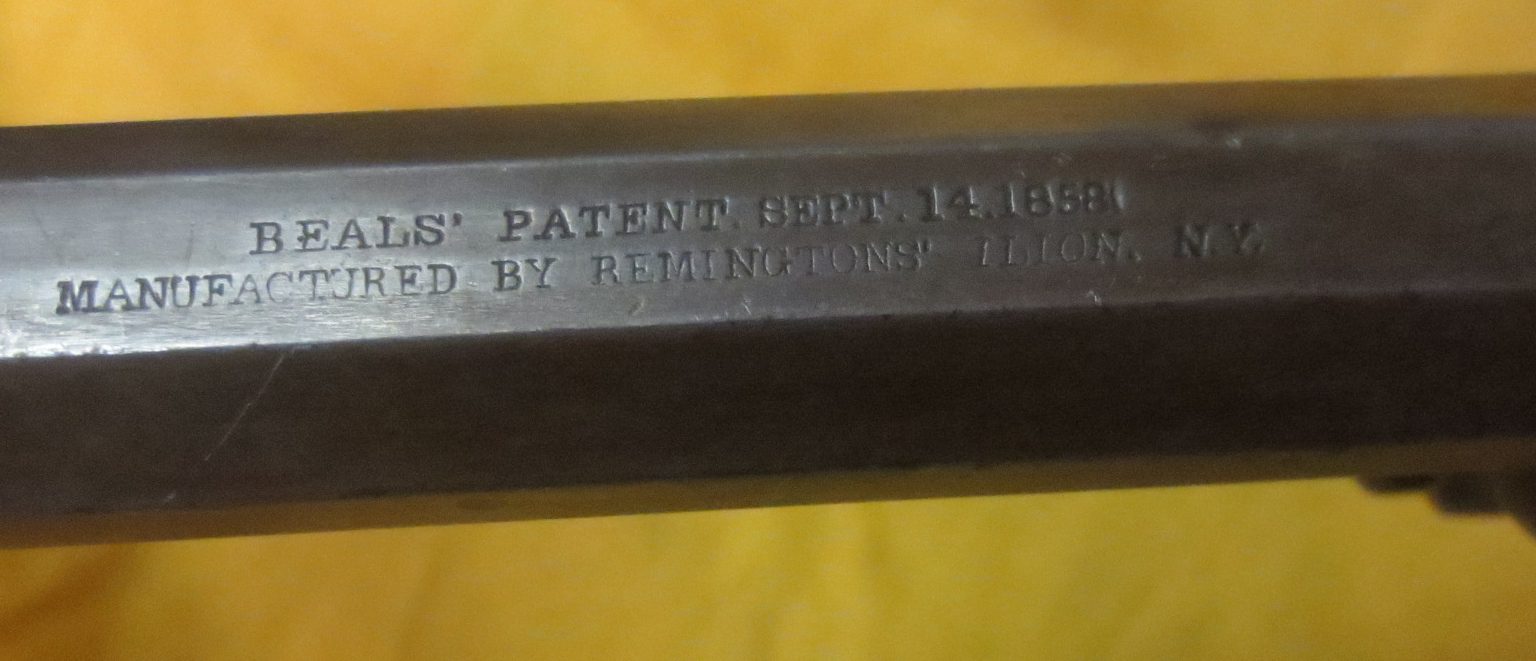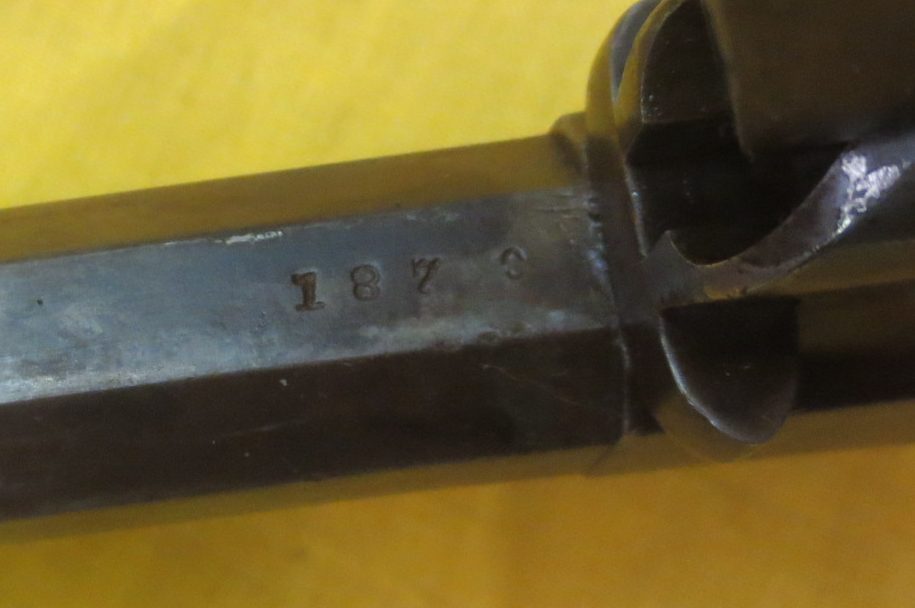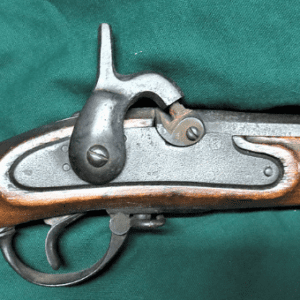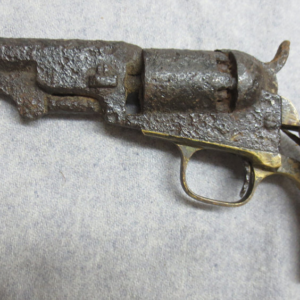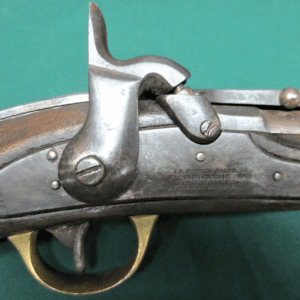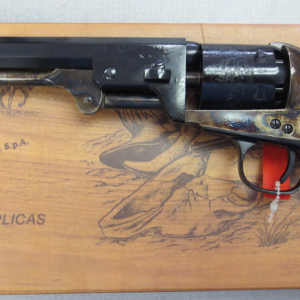Description
In 1857, the firm of E. Remington & Sons of introduced their first percussion revolver. The .44 “Army” Beals was an invention of Remington employee Fordyce Beals. The weapon bore a resemblance to the “Walking Beam” revolver then in production by Whitney. The Whitney revolver was based upon Beals’ 1854 patent which evaded Colt’s protection of his pistol’s mechanism. In 1856, Beals patented the features that defined his new Remington revolver and in 1858 patented the cylinder pin and loading lever system that would be the profile of all the large-frame Remington handguns through the 1880s.
Beals’ 1858 patent (#21,478) was granted on September 14th and covered the winged cylinder arbor pin that secured the cylinder to the frame, which was retained by the loading lever located under the barrel and could be withdrawn from the frame only when the lever was lowered. Thus began the evolution of the second most used US marital revolver of the American Civil War. The first guns were produced in .36 caliber and production started to roll off the assembly line during late 1860 or early 1861. The .36 caliber “Navy” revolver was followed by a .44 caliber “Army” variant soon thereafter. By the time Beals pattern revolver production ended in 1862, some 15,000 of the “Navy” sized handguns had been produced, while only about 2,000 of the larger “Army” revolvers were manufactured. The subsequent model was the William Elliott “improved” Model 1861 pattern Remington revolvers, also known to collectors as the “Old Model” Remingtons, which started to replace the Beals models by the middle of 1862.
The Beals Army, like the Navy, was a single action, 6-shot percussion revolver. The .44 caliber “Army” had an 8” octagonal barrel that was screwed into the solid frame. While most references list the barrel length as 8” exactly, most extant examples vary by as much as 1/8”, typically on the shorter side. The guns were blued throughout, with brass triggerguards and a color casehardened hammer. The guns had two-piece smooth walnut grips, secured by a screw that passed through German silver escutcheons and a cone shaped German silver front sight was dovetailed into the top of the barrel near the muzzle. There were a number of differences between the Beals models and the later production “Old Model” 1861 and “New Model” 1863 revolvers. The most obvious differences were the “high spur” hammer and the fact that frame concealed the barrel threads at the rear of the barrel. Shortly after the “Old Model” 1861 went into production, these features were eliminated. A relief cut in the frame revealing the threads at the barrel’s end was added to reduce the possibility of lock up due to fowling and a lower spur hammer was adopted eventually to reduce the potential for breakage. The system of retaining the cylinder arbor pin via the loading lever evolved as well. While the Beals revolver required the lever to be lowered to withdraw the pin, the Model 1861 (aka “Old Model”) included a relief cut in the top of the lever that allowed the pin to be pulled forward with the lever in its upright and locked position.
The Beals models did not have safety notches on the rear of the cylinder that would allow the hammer to be safely dropped and locked between cylinder chambers. This feature was added to the Model 1861 and 1863 revolvers. Other minor evolutions occurred as well, including making the loading lever slightly larger and more robust. As the Beals was the first of the large frame martial Remington revolvers it underwent some changes and improvements during its production.
All issues of the Beal’s .44 are scarce, as fewer than 2,000 were ever produced. This one is one of the first ones that rolled out of the factory. It is mechanically crisp as new, functions flawlessly, and has very little oxidation or corrosion evident. The blued finish has mellowed to a nice plum brown overall and the walnut grips are near perfect as well, as is the bore. The matching serial number is stamped underneath the left grip on the frame. Museum and investment grade all the way on this very, very rare early Civil War production revolver.


